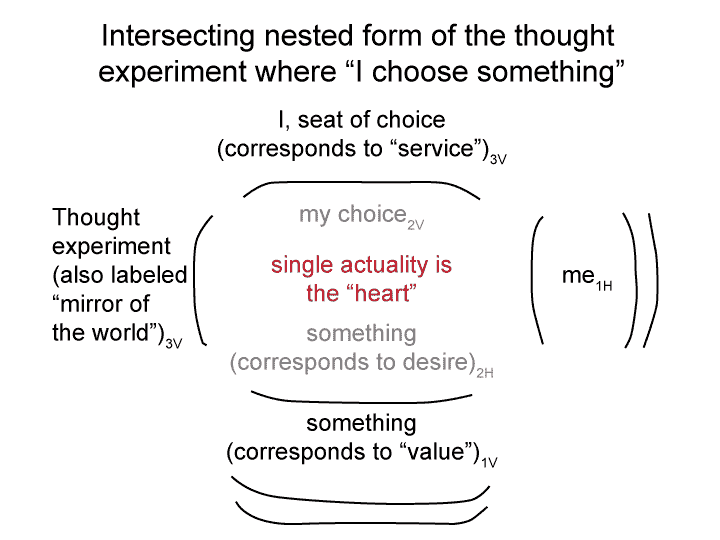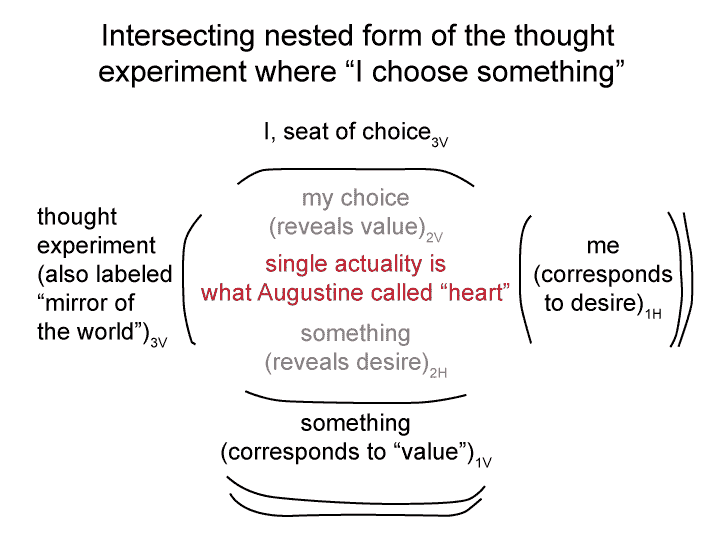Category Archives: presence underlying religion
Man and Sin by Piet Schoonenberg (1964) 2.3 FF
Summary of text [comment] page 82
[The whole person stands in the heart, the intersection of choice and desire.]
Man and Sin by Piet Schoonenberg (1964) 2.3 FE
Summary of text [comment] page 82
[At present, 50 years after Schoonenberg, we glimpse how Schoonenberg was on target.
The idea of concupiscence includes both flesh and reason. Both were corrupted in the Story of the Fall. Both belong to Original Sin.
The historic emphasis in Church doctrine on concupiscence elevates the idea that flesh is redeemable because reason (fortified by grace) could rule.
However, whenever the comment in the parenthesis is ignored or forgotten, then Pelagius, a Stoic disguised as a Christian, takes the stage.]
Man and Sin by Piet Schoonenberg (1964) 2.3 FD
[Infant baptism introduces a state of grace that rights reason by lifting the burden of material evil … I mean, Original Sin … from the baby.
This short-circuited the Manichean agenda.
Rather than asking reason to memorize secret knowledge in order to escape the burden of matterevil, Augustine asked reason to accept the historic configuration of Original Sinevil.
Once the latter was regarded as plausible, baptism could remove the evil, leaving the believer in a world infused with Original Sin, yet, at the same time, liberated from the necessity of escape.]
Man and Sin by Piet Schoonenberg (1964) 2.3 FC
Summary of text [comment] page 82
[For Augustine, the (situation-level) flesh was redeemable because (content-level) reason could rule.
But, reason could not rule on its own.
As St. Paul implied, reason was just as corruptible as the flesh.
Reason was redeemable because it was open to the (perspective-level) gift of grace through Christ.]
Man and Sin by Piet Schoonenberg (1964) 2.3 FA
[Speculative reason was obviously superior to practical reason.
Augustine started as a Manichean because it was the philosophy of those who considered themselves better the common folk.
Then, Augustine experienced a change of heart.
In doing so, he ultimately placed the speculations of the Manicheans in the same inferior position as Manicheans put common folk.
The interscope of Manichean speculation became the intersection of Augustine’s heart.]
Man and Sin by Piet Schoonenberg (1964) 2.3 DG
Summary of text [comment] page 82
[Schoonenberg writes during the Cold Battle of Materialist Ideologies (1945-1989 AD).
Two contending post-religionist (enlightenment) religions survive the Hot Battle of Fraternal Ideologies (1930-1945).
These are Communism and Progressivism (so-called Big Government Liberalism)].
Man and Sin by Piet Schoonenberg (1964) 2.3 DF
[What is the lesson?
A post-religionist (enlightenment) godhead wins every battle among the enlightenment gods in the 20th century.
American citizens do not win the so-called Cold War.
Big Government Liberalism win the Cold Battle among the Materialist Ideologies (7745-7789 U0’).
Big Government Liberalism is a sovereign religion.]
Man and Sin by Piet Schoonenberg (1964) 2.3 DE
Summary of text [comment] page 82
[Today, certain semiotic scholastics may be labeled post-modern.
In the same way, I call certain enlightenment and modern thinkers post-religionist.
Schoonenberg is not a post-religionist (enlightenment) thinker.
He is a modern who witnessed the horrors of modernism.
He tries to find a way out of the interpellation of the post-religionist (enlightenment) godheads.
Unfortunately, he writes right at the time when a new set of enlightenment gods enter into conflict.
In 1960, the conflict rages between two ideologies of materialism: Soviet Communism and Big Government Liberalism.]


